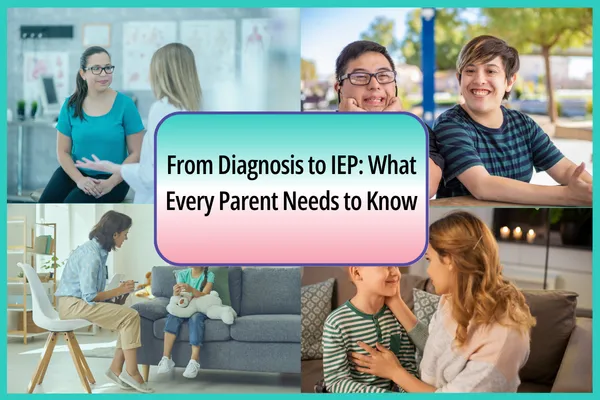
From Diagnosis to IEP: What Every Parent Needs to Know
Introduction When your child receives a diagnosis that may impact their learning—whether it’s autism, ADHD, dyslexia, or a speech delay—it’s natural to feel overwhelmed. Suddenly, you’re faced with decisions, paperwork, meetings, and unfamiliar jargon. The good news is, you don’t have to navigate this road alone. This guide will walk you through the steps from diagnosis to getting an effective IEP, empowering you to advocate with clarity and confidence.
Step 1: Understand the Diagnosis Receiving a diagnosis is a pivotal moment. It provides clarity and opens doors to support systems. Learn as much as you can about the condition. Ask your child’s doctor questions. What does this mean for their education? What strengths and challenges are common? This foundational knowledge will be vital as you move forward.

Step 2: Requesting an Evaluation You can initiate the IEP process by requesting an evaluation in writing. Address the letter to your child’s school principal or special education coordinator. Schools are legally required to respond within a specific timeline (typically 15 days) and provide you with an assessment plan.
Step 3: The Evaluation Process Evaluations are comprehensive and involve multiple professionals—psychologists, speech therapists, occupational therapists, and special education teachers. They may observe your child, administer tests, and consult with classroom teachers. The results will be used to determine if your child qualifies under one of IDEA’s 13 categories.
Step 4: The Eligibility Meeting Once the evaluation is complete (usually within 60 days), the IEP team meets to review the findings. If your child qualifies, the team moves forward with creating the IEP. If not, you can request a 504 Plan or pursue an Independent Educational Evaluation (IEE) at the school’s expense.
Step 5: Writing the IEP This is a collaborative process. As a parent, your observations matter. Share what works and doesn’t work at home. The IEP will include:
· Educational goals
· Services (e.g., speech therapy, OT, reading intervention)
· Accommodations (e.g., extended time, breaks)
· Placement (general ed, special ed, or combination)

Step 6: Implementation and Monitoring Once signed, the IEP becomes active. Teachers and service providers must follow it. You’ll receive progress reports—review them carefully. If your child isn’t making expected progress, don’t wait for the annual meeting. Request an IEP review.
Advocacy Tips:
Be proactive and organized. Create a binder with reports, emails, and notes.
Build relationships with teachers.
Ask for data. Progress should be measured with evidence.
Know your rights. Use state resources and advocacy centers.

Dealing with Emotions It’s okay to grieve, to be frustrated, or to feel unsure. You’re adjusting to a new normal. But also, celebrate your child’s wins—every milestone, no matter how small. You’re not just navigating paperwork; you’re championing your child’s future.
Checkout my course here: THE ENLIGHTENED IEP COURSE
Conclusion From the moment of diagnosis to receiving your first IEP, the path can feel complex. But it’s also a journey of empowerment. By staying informed and involved, you ensure your child has access to the tools and support they need to thrive. With knowledge, community, and faith in your child’s potential, you’re more than capable of navigating the road ahead.
